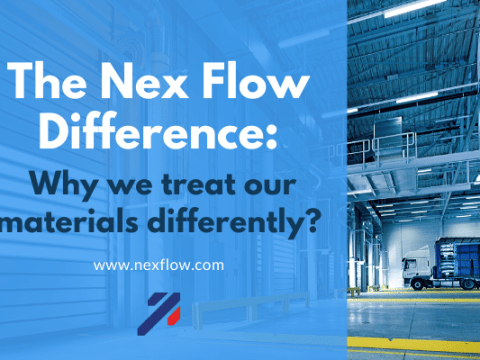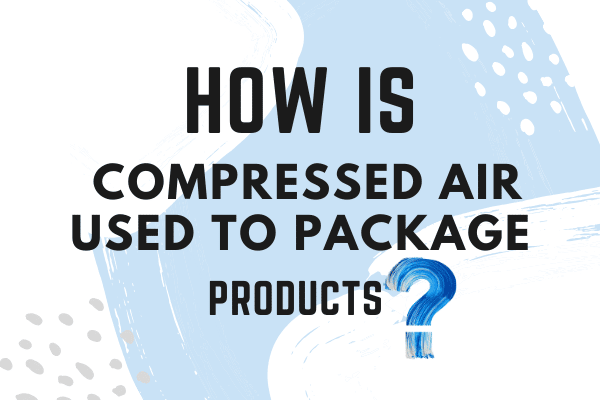
Industrial Panel Air Conditioning Options and Trends
The various options for cooling electrical cabinet coolers include, traditional compressor-based air conditioners, air-to-air heat exchangers (with heat pipes), thermoelectric air conditioners, and finally vortex coolers. Each cooling method has its plus’s and minus’s.
Sensitive electronic devices are used increasingly in hostile environments. High temperatures, contaminant-laden air, high humidity and corrosive atmospheres are bound to negatively affect sensitive electrical and electronic equipment. Damage to the controls can result in costly repairs, downtime, and even lost data. Inadequate protection of the controls can cause unwanted heat buildup, which can increase an enclosure’s internal temperature above the manufacturer’s recommended ratings for electronics/electrical equipment installed inside. This heat can come from both internal and external sources.
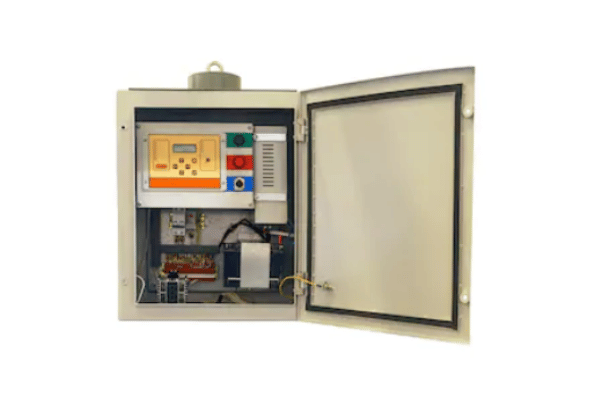
Internal heat sources come from the very components that needs cooling. These include:
- Variable Frequency Drives (VFD’s)/inverters
- Battery Pack back-up systems
- Communication equipment
- PLC systems
- Power supplies
- Routers & switches
- Servers
- Transformers
External heat sources come from the factory environment. Including:
- Heat from blast furnaces and foundries in heavy steel and metals production
- engine rooms
- food processing factories with high humidity and heat
- industrial ovens from bakeries and paint facilities
- hot climates in general
- manufacturing plants, especially producers of materials like insulation, carbon black or where other airborne dust and dirt particles are in the factory atmosphere
- outdoor solar heat gain if the control are in direct sunlight
- uninsulated and/or non-air conditioned buildings that heat up during the day
Although these heat sources may present a problem and potential damage to the systems – there are various methods in keeping the control panel cool. Here are some ways along with their advantages and drawbacks.
Traditional Compressor-Based Air Conditioners
Pros: High cooling capacity
Cons: Higher maintenance, high capital cost, more sensitive to breakdown the worse the environment
Compressor-Based air conditioners rely on chemical refrigerants to remove heat from electronic/electrical enclosures. In addition to refrigerants, these air conditioners also use compressors, evaporators, condensers, and fans to provide cooling. The refrigerants used in the past are being replaced with more environmentally friendly products but the cost of these new refrigerants are sometimes ten times that of the obsolete refrigerants. In addition, some if not most of these new refrigerants are flammable which means there are design changes to insure safety when connected to a control panel with a potential to produce a “spark”. These units produce condensate which must be removed. Fans need filters which must be cleaned or replaced. If mounted on equipment subject to vibration then the refrigerant can leak out prematurely and need costly replacement. This also means more shutdowns affecting production. Depending on the factory environment lifespan of a traditional air conditioner can be anywhere from five to ten years but in very harsh environments, much much less.
Air-to-Air Heat Exchangers
Pros: Low maintenance, relatively inexpensive
Cons: Cannot cool below ambient so limited by environment.

Efficient, cost-effective cooling can be realized through heat pipe assembly systems. These air-to-air heat exchangers remove waste heat from sealed electrical panels and enclosures to protect sensitive electronic components without exposing them to harsh, dirty environments outside the cabinet, a nice advantage. Simple design means long life as well, although because they use fans, the fans need to have care and maintenance, especially in harsh factory environments. However, the big problem is that you cannot cool below the environment ambient temperature and in many factory environment that temperature is still too high and therefore limiting the use of this technology.
Thermoelectric Air Conditioners
Pros: Reliable, relatively low maintenance
Cons: Cooling capacity is limited, and must be careful to size accurately, potentially use much more power to operate, extra care needed in installation.
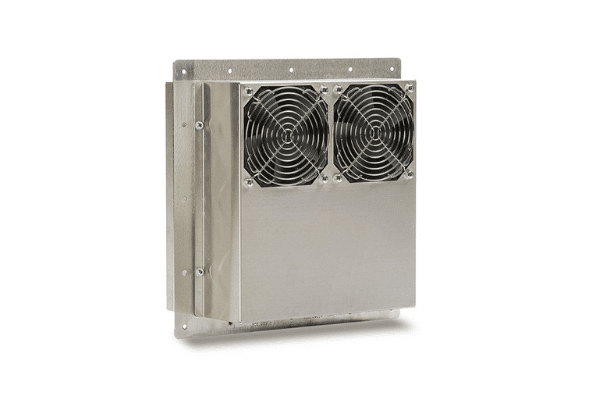 Thermoelectric solid-state air conditioners utilizing the Peltier effect were introduced some years ago but only have limited use for a variety of reasons. This effect is harnessed by using two elements of a semiconductor constructed from doped bismuth telluride. Upon application of a direct current (DC) power source, the device transfers heat from one side to the other. The side that heat is taken from becomes cold. They can dissipate loads up to 2,500 BTU/hr. However, there are some issues to consider. Peltier modules release a large amount of heat in the course of operation. They require in the cooler heatsinks and fans capable of efficiently deflecting surplus heat from the cooling modules. Thermoelectric modules are noted for their relatively low efficiency coefficient; when they act as heat pumps, they are powerful sources of heat. Using these modules in cooling devices however, intended to protect the electronic components of the computer, dramatically increases the temperature within the system unit. This sometimes requires additional cooling devices within the controls. If you don’t use additional cooling, the high temperatures can complicate operating conditions — even for the modules. Also, using Peltier modules creates a relatively heavy extra load for the power supply to handle. At the cooling side, the low temperatures produced by the operation of Peltier coolers can be too low and cause moisture from the air to condense inside the cabinet. This is dangerous for electric components. Therefore extra care needs to be taken in choosing the correct unit. When choosing a Peltier module of appropriate cooling power, it is necessary to ensure that the entire surface of its cold and hot sides are used. Otherwise, the parts of the module that do not have contact with the surface of the protected object (such as a processor chip) will only waste power and emit heat, decreasing overall cooling efficiency, possibly quite dramatically. One comment made by an informed user was that “They only become effective when the temperature differential is large enough. In most cases it will just increase the wattage drawn without doing anything that much better than a plain air conditioner.” The cold side gets cold, but then you’ve got an even larger amount of heat to remove from the hot side. So you need an even larger heatsink or some heat removal system on the other side. Hence the extra care in any installation.
Thermoelectric solid-state air conditioners utilizing the Peltier effect were introduced some years ago but only have limited use for a variety of reasons. This effect is harnessed by using two elements of a semiconductor constructed from doped bismuth telluride. Upon application of a direct current (DC) power source, the device transfers heat from one side to the other. The side that heat is taken from becomes cold. They can dissipate loads up to 2,500 BTU/hr. However, there are some issues to consider. Peltier modules release a large amount of heat in the course of operation. They require in the cooler heatsinks and fans capable of efficiently deflecting surplus heat from the cooling modules. Thermoelectric modules are noted for their relatively low efficiency coefficient; when they act as heat pumps, they are powerful sources of heat. Using these modules in cooling devices however, intended to protect the electronic components of the computer, dramatically increases the temperature within the system unit. This sometimes requires additional cooling devices within the controls. If you don’t use additional cooling, the high temperatures can complicate operating conditions — even for the modules. Also, using Peltier modules creates a relatively heavy extra load for the power supply to handle. At the cooling side, the low temperatures produced by the operation of Peltier coolers can be too low and cause moisture from the air to condense inside the cabinet. This is dangerous for electric components. Therefore extra care needs to be taken in choosing the correct unit. When choosing a Peltier module of appropriate cooling power, it is necessary to ensure that the entire surface of its cold and hot sides are used. Otherwise, the parts of the module that do not have contact with the surface of the protected object (such as a processor chip) will only waste power and emit heat, decreasing overall cooling efficiency, possibly quite dramatically. One comment made by an informed user was that “They only become effective when the temperature differential is large enough. In most cases it will just increase the wattage drawn without doing anything that much better than a plain air conditioner.” The cold side gets cold, but then you’ve got an even larger amount of heat to remove from the hot side. So you need an even larger heatsink or some heat removal system on the other side. Hence the extra care in any installation.
Vortex Coolers
Pros: Low maintenance, small footprint, low cost, keeps out moisture and dirt, no condensate, not subject to vibration, easy to install.
Cons: Require compressed air
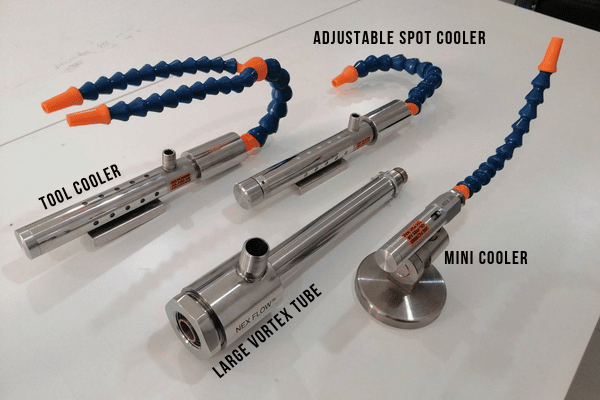
Vortex coolers can be a low cost way to cool and purge electronic/electrical enclosures, especially in situations where conventional cooling by enclosure air conditioners is not possible. Applications may include small to medium size equipment enclosures. Vortex coolers use compressed air to provide a cooling air flow. This means they are limited to applications where there is a ready source of clean, compressed air such as in medium to large industrial plants. The positive aspect is that it is these sizes of factories that usually have the cooling issues with their electrical and electronic control panels – hot and humid environment, and dirt and particulate in the atmosphere, have the compressed air.
The primary component in a vortex cooler is a vortex tube, also known as the Ranque-Hilsch vortex tube that creates a swirling effect from the compressed air input and separates it into hot and cold air streams. A vortex cooler is unique in that it has no moving parts. At the end of the hot tube, a small portion of this air exits through a needle valve as hot air exhaust. The cold is pushed into the enclosure which air conditions the cabinet. A properly designed vortex cooler like the Nex Flow panel Cooler has a built-in exhaust so there is no need to vent the enclosure, and has been tested and NEMA (and/or IP) approved to insure no water can get inside a cabinet from the outside. This vortex provides a positive purge on the cabinet, which also helps to keep dirt, dust and debris out of the enclosure. There is no condensate to deal with. Because the compressed air is filtered to be clean and moisture removed (a necessary requirement with vortex coolers), even if the compressed air supply is saturated with moisture before the filter, there will be no moisture inside the cabinet because the compressed air goes back to near atmospheric pressure keeping the relative humidity of the cooling air low. One nice feature about the cooling effect of a vortex tube cooler that is often not noticed is that its cooling effect depends only on the temperature of the compressed air. So even if very hot environments, for example right next to a hot furnace, as long as the compressed air temperature is reasonable, it will cool very effectively. It is very difficult to install a vortex cooler badly. It is simply a matter of putting in a standard knockout hole on the control panel, installing the unit, adding a hose with punched holes (to distribute the cold air around the panel quickly), and then let it operate. An optional thermostat with solenoid can turn the air on and off as needed to conserve energy. A major application is for variable frequency drives (VFD’s) where the cooling is normally needed only on startup only so energy use is actually quite minimal and very cost effective. The harsher the factory environment, the more vortex coolers become economical as they do not break down in such environments nor do they have the extra maintenance the alternatives require.
| COMPRESOR BASED AIR CONDITIONERS | AIR-TO-AIR HEAT EXCHANGERS | THERMOELECTRIC AIR CONDITONERS | VORTEX COOLERS | |
| INITIAL COST: | High and becoming Higher | Low | Moderate | Low |
| EASE OF INSTALLATION | Complex | Simple | Can be complex | Simple |
| ENERGY USE | Moderate | Low | Moderate | High |
| MAINTENANCE TIME & COST | Moderate to high | Moderate due to fans | Moderate | Low (may offset energy cost) |
| EASILY HELPS KEEP ENCLOSURE CLEAN | No | Yes | Yes | Yes |
| EASILY HELPS KEEP ENCLOSURE DRY | No | Yes | No | Yes |
| ABILITY TO COOL BELOW AMBIENT | Yes | No | Yes | Yes |
| FRIENDLY TO ENVIRONMENT | No (costly chemicals that eventually go Into environment) | Yes | Yes | Yes |
| RESISTANCE TO | Poor | Good | Fair | Very Good |
| SIZE & WEIGHT | Moderate to Heavy Size and Weight | Moderate Size And Weight | Moderate Size And Weight | Small Size and Lightweight |
| RELIABILITY AS ENVIRONMENT BECOMES HARSH | Becomes less the more Harsh | Limited by Fans | Limited by Fans | Remains Highly Reliable |
WordPress Tables Plugin





